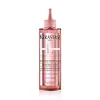What's inside
What's inside
 Key Ingredients
Key Ingredients

 Benefits
Benefits

 Concerns
Concerns

 Ingredients Side-by-side
Ingredients Side-by-side

Water
Skin ConditioningSodium C12-13 Pareth Sulfate
CleansingCocamidopropyl Betaine
CleansingSodium Chloride
MaskingGlycerin
HumectantParfum
MaskingDimethiconol
EmollientSodium Benzoate
MaskingCitric Acid
BufferingGlycol Distearate
EmollientCarbomer
Emulsion StabilisingSodium Laureth Sulfate
CleansingGuar Hydroxypropyltrimonium Chloride
Skin ConditioningTea-Dodecylbenzenesulfonate
CleansingCocamide Mea
EmulsifyingDisodium EDTA
PPG-9
Skin ConditioningPEG-45m
HumectantCocos Nucifera Oil
MaskingMacadamia Integrifolia/Tetraphylla Seed Oil
EmollientBenzyl Alcohol
PerfumingBenzyl Salicylate
PerfumingHexyl Cinnamal
PerfumingLinalool
PerfumingMica
Cosmetic ColorantCI 77891
Cosmetic ColorantCI 17200
Cosmetic ColorantCI 42090
Cosmetic ColorantCI 19140
Cosmetic ColorantWater, Sodium C12-13 Pareth Sulfate, Cocamidopropyl Betaine, Sodium Chloride, Glycerin, Parfum, Dimethiconol, Sodium Benzoate, Citric Acid, Glycol Distearate, Carbomer, Sodium Laureth Sulfate, Guar Hydroxypropyltrimonium Chloride, Tea-Dodecylbenzenesulfonate, Cocamide Mea, Disodium EDTA, PPG-9, PEG-45m, Cocos Nucifera Oil, Macadamia Integrifolia/Tetraphylla Seed Oil, Benzyl Alcohol, Benzyl Salicylate, Hexyl Cinnamal, Linalool, Mica, CI 77891, CI 17200, CI 42090, CI 19140
Alcohol Denat.
AntimicrobialPropylene Glycol
HumectantWater
Skin ConditioningCaprylic/Capric Triglyceride
MaskingMyristyl Alcohol
EmollientCetearyl Alcohol
EmollientCetrimonium Chloride
AntimicrobialBehentrimonium Methosulfate
Parfum
MaskingLactic Acid
BufferingPEG-14 Dimethicone
Skin ConditioningPPG-10 Methyl Glucose Ether
Skin ConditioningDi-C12-13 Alkyl Malate
EmollientTocopherol
AntioxidantTartaric Acid
BufferingLinalool
PerfumingLimonene
PerfumingGeraniol
PerfumingCentella Asiatica Extract
CleansingPentaerythrityl Tetra-Di-T-Butyl Hydroxyhydrocinnamate
AntioxidantCeramide AP
Skin ConditioningAlcohol Denat., Propylene Glycol, Water, Caprylic/Capric Triglyceride, Myristyl Alcohol, Cetearyl Alcohol, Cetrimonium Chloride, Behentrimonium Methosulfate, Parfum, Lactic Acid, PEG-14 Dimethicone, PPG-10 Methyl Glucose Ether, Di-C12-13 Alkyl Malate, Tocopherol, Tartaric Acid, Linalool, Limonene, Geraniol, Centella Asiatica Extract, Pentaerythrityl Tetra-Di-T-Butyl Hydroxyhydrocinnamate, Ceramide AP
Ingredients Explained
These ingredients are found in both products.
Ingredients higher up in an ingredient list are typically present in a larger amount.
Linalool is a fragrance and helps add scent to products. It's derived from common plants such as cinnamon, mint, citrus, and lavender.
Like Limonene, this ingredient oxidizes when exposed to air. Oxidized linalool can cause allergies and skin sensitivity.
This ingredient has a scent that is floral, spicy tropical, and citrus-like.
Learn more about LinaloolParfum is a catch-all term for an ingredient or more that is used to give a scent to products.
Also called "fragrance", this ingredient can be a blend of hundreds of chemicals or plant oils. This means every product with "fragrance" or "parfum" in the ingredients list is a different mixture.
For instance, Habanolide is a proprietary trade name for a specific aroma chemical. When used as a fragrance ingredient in cosmetics, most aroma chemicals fall under the broad labeling category of “FRAGRANCE” or “PARFUM” according to EU and US regulations.
The term 'parfum' or 'fragrance' is not regulated in many countries. In many cases, it is up to the brand to define this term.
For instance, many brands choose to label themselves as "fragrance-free" because they are not using synthetic fragrances. However, their products may still contain ingredients such as essential oils that are considered a fragrance by INCI standards.
One example is Calendula flower extract. Calendula is an essential oil that still imparts a scent or 'fragrance'.
Depending on the blend, the ingredients in the mixture can cause allergies and sensitivities on the skin. Some ingredients that are known EU allergens include linalool and citronellol.
Parfum can also be used to mask or cover an unpleasant scent.
The bottom line is: not all fragrances/parfum/ingredients are created equally. If you are worried about fragrances, we recommend taking a closer look at an ingredient. And of course, we always recommend speaking with a professional.
Learn more about ParfumWater. It's the most common cosmetic ingredient of all. You'll usually see it at the top of ingredient lists, meaning that it makes up the largest part of the product.
So why is it so popular? Water most often acts as a solvent - this means that it helps dissolve other ingredients into the formulation.
You'll also recognize water as that liquid we all need to stay alive. If you see this, drink a glass of water. Stay hydrated!
Learn more about Water